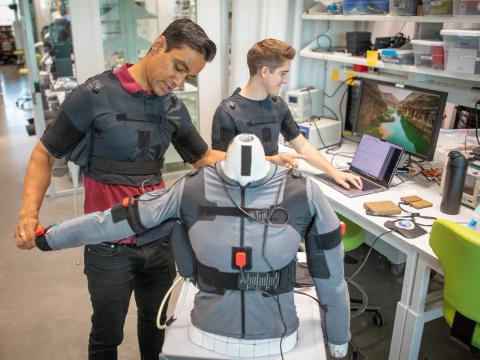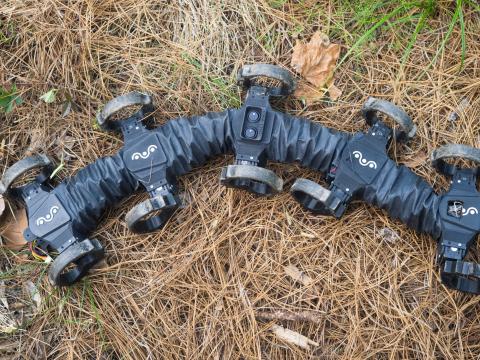Gen. James Rainey: Man-Machine Integration May Revolutionize Combat Arms
The integration of human beings and machines will prove a dramatic evolution—and possibly a revolution—in military operations, according to Gen. James Rainey, commander, U.S. Army Futures Command.
Serving as the final keynote speaker at the AFCEA TechNet Augusta Conference in Augusta, Georgia, August 14-17, Gen. Rainey compared the competition for dominance in artificial intelligence (AI), machine learning (ML) and quantum computing to the historic space race and arms race for nuclear weapons.
“When I’m asked about AI, ML, quantum, I’m all in. Whoever figures that out is going to have an incredible, marked advantage akin to the nuclear arms race, the space race—it’s that big a deal,” Gen. Rainey said.
He predicted that human-machine integration in the coming years will be truly disruptive. “Human-machine integration, I think, in the next five, 10 years, that’s going to be the most disruptive and evolutionary thing. And I’m not saying that just because the Army’s getting smaller,” he said, adding that it will be “at least a dramatic evolution of professional arms, maybe revolutionary.”
The commander described the current time as “probably at the most disruptive period of change in the character of war and our profession since at least before World War II, adding that, “This period is at least that disruptive.”
Army officials intend to use AI and ML to aid decision-making and take over some of the dirty, dangerous or monotonous jobs so that soldiers are free to conduct their missions. “But at the same time, there are things that computers are never going to do: tactical decision-making. No computer is ever going to do that,” Gen. Rainey said. “As we go down this path very aggressively as fast as we can, we’ve got to make sure we are aiding commanders’ decision-making, not trying to make decisions for commanders. Because that would be a disastrous mistake. You’re not ever going to teach a computer to practice the art of command.”
He also said that robots should not replace soldiers or major weapon systems. “Going after robotics as a replacement for soldiers, replacing a tank with a robot, I think that’s misguided.”
In a discussion with reporters following his presentation, the commander listed man-machine integration as the top capability he would like to have in the next year or two. “What we need to do—and all this can be done today—is take the right combination of human beings and machines and build the formations that optimize both,” he told the audience.
Gen. Rainey also stressed the importance of linking soldiers and robots, protecting that connection and maintaining the ability to control the robots and use them in an ethical manner. “That’s going to get into AI-driven warfare. It’s going to lead to the physical connections of those systems, standard controllers, open architectures. Those kinds of challenges, I think, will be a focal point that we can leverage industry, academia and the military to work together.”
But to gain dominance in those technological areas, the Army must first improve its ability to use data. “The ability to realize the full potential of any of those things requires us to move to a genuinely data-centric approach to the network,” Gen. Rainey said. “Even if all those things were possible now, we, the United States military and the Army, could not take advantage of that fully because the data is all over the place. It’s not standard. We don’t have access to it. We don’t have it labeled.”
A data-centric network, he added, will be “fundamentally different than it is now.”
What we need to do—and all this can be done today—is take the right combination of human beings and machines and build the formations that optimize both.
Designing for adaptability is central to the Army’s future plans, Gen. Rainey suggested. “If you ask me the characteristic I desire the most, I would say adaptability,” he said. “Adaptability is the key.”
He recommended designing systems so that new technologies can be integrated as rapidly as possible. “That’s something the senior folks in the room, me included, need to be working on. It needs to be reliable. It needs to be redundant."
At the same time, Gen. Rainey would like to “design out” complexity and cost.
He also stressed the importance of command and control. “The command-and-control warfighting function is the most important, and it is entirely about the commander—one person. We can’t lose sight of that,” he said.
Despite being in a period of rapid change and technological disruption, some things remain the same—warfare will always be a contest of wills, controlling land will always be a determining factor, and people will always be most important, he said. “Whatever we do, we cannot lose the ability to close with and destroy the enemy. The future of war is not going to be some sharp-shooting exchange of precision munitions. The horror of war isn’t going anywhere,” he said.




Comments